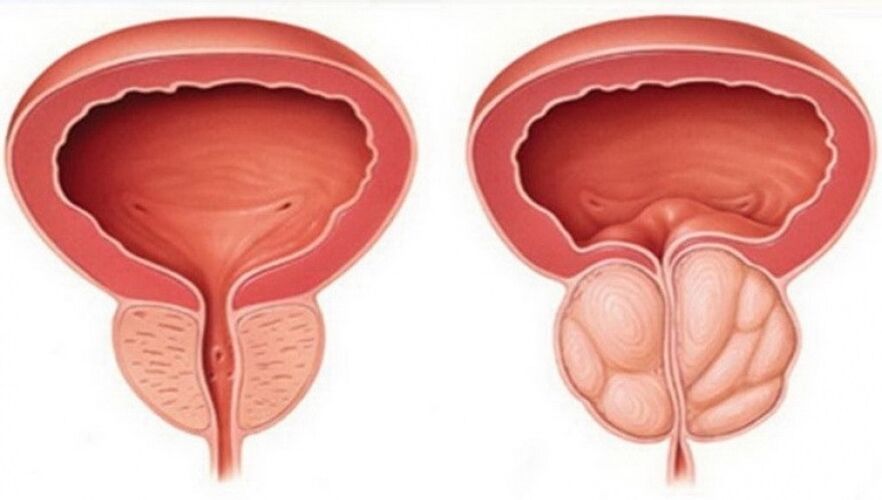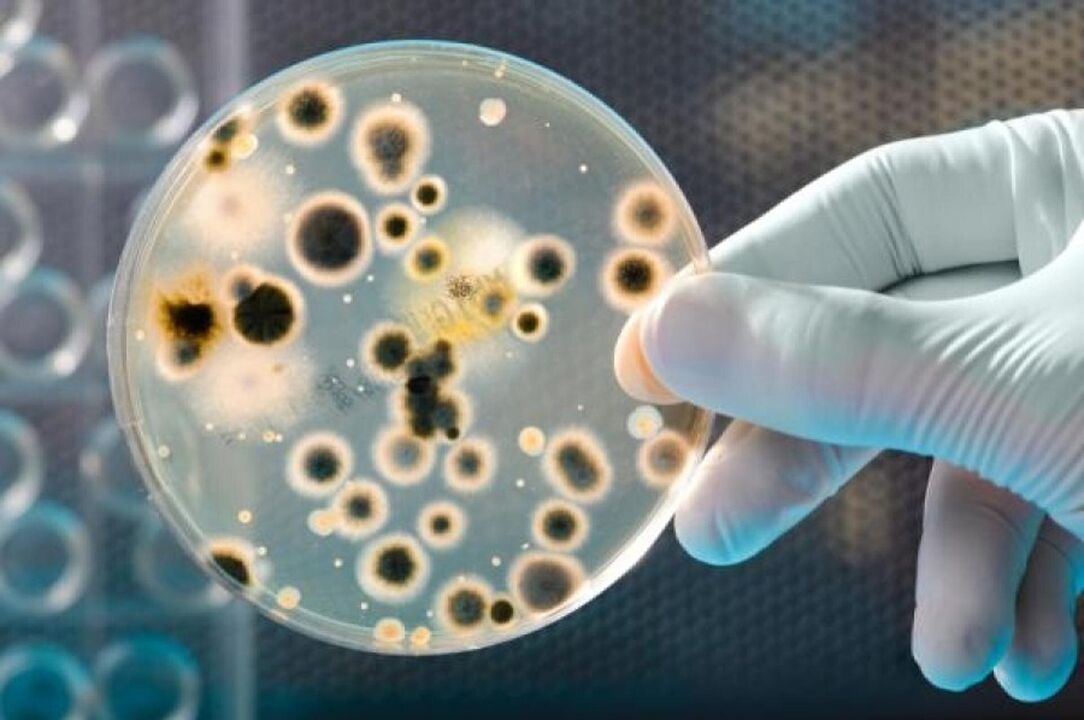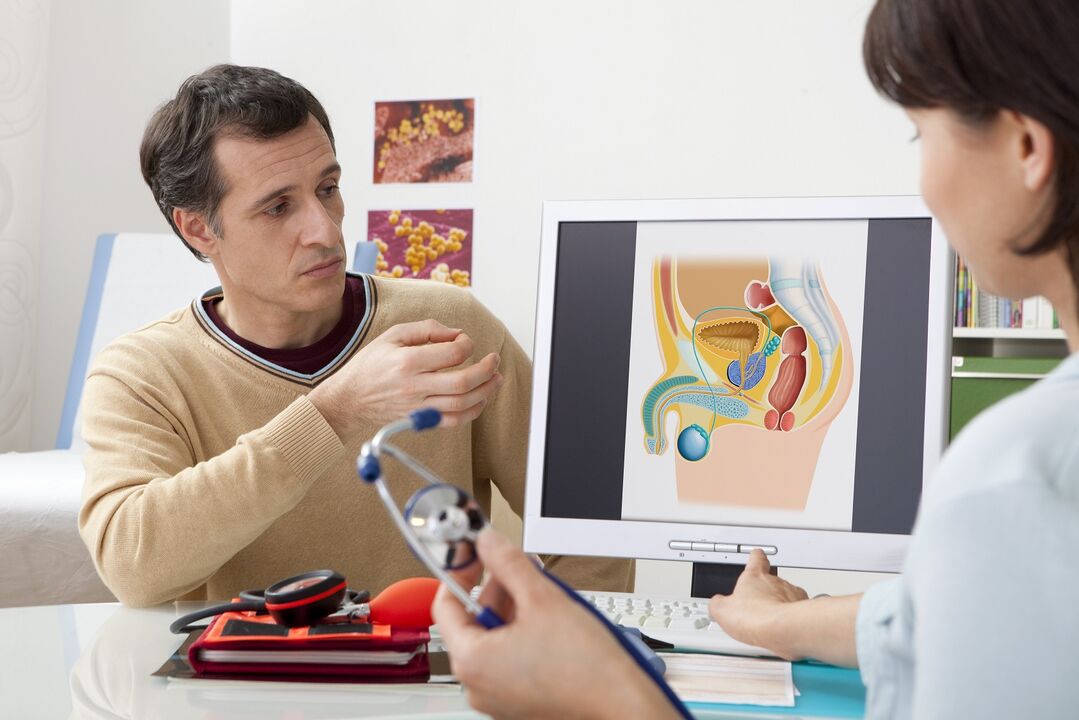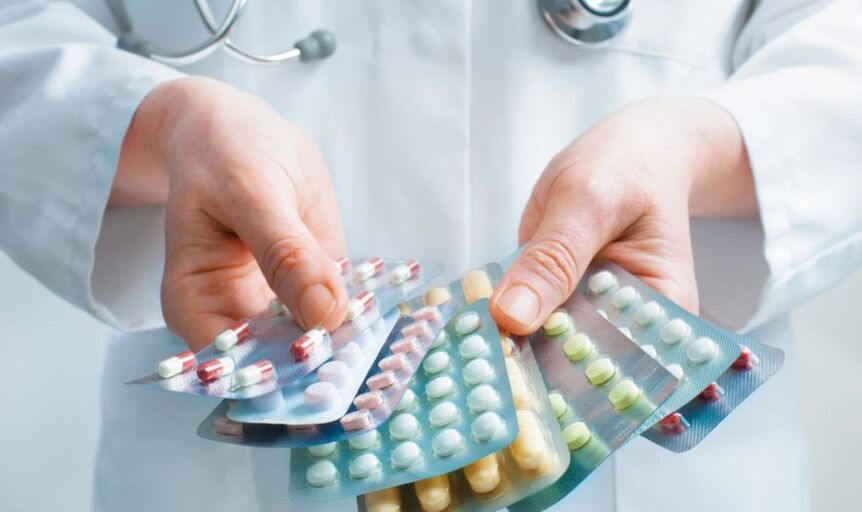According to BME, prostatitis is an inflammatory process that occurs in the prostate in men with damage to the parenchyma and interstitium. Treatment of prostatitis in men is a long and difficult event, most often due to complete ignorance of the disease at the very beginning. What is prostatitis, what are their causes and first signs, what you need to know about the topic of "diagnosis" and what modern methods of treating prostatitis exist. All men must know about prostatitis in this review article.

Ab this - from the egg
We are not talking about Horace's satires, in this case we are interested in everything related to prostatitis, from the very beginning to the last "squeak" of treatment. Symptoms of prostatitis are found in men during active sexual activity, from 25 to 45 years, in the thematic video you can study in detail everything about the basis of the disease, its causes and symptoms, the specifics of diagnosis and treatment.
The reasons for the development of prostatitis are extensive. In prostatitis, infectious factors have the greatest weight in the development of the disease:
- Acute form. Coca flora acts as provocative reasons.
- Chronic form. The reasons for its development are greater, because the primary factors of this prostatitis in men are: gonococci, trichomonas, Gr + and Gr-bacteria, mycobacteria of tuberculosis. In rare cases, the diagnosis reveals mycoplasmas, viruses, fungi, chlamydia, etc.
It is important to note that chronic prostatitis, caused by a pathogen that has penetrated the prostate, may later have a pathogenic factor and be of an abacterial nature. The acute form is more often caused by external causes: hypothermia, urethral trauma or bladder damage as a result of endoscopic examinations or various manipulations, hypodynamics and, as a result, impaired circulation of blood and lymph in the pelvis (congestive prostatitis), hormonal or autoimmune disorders.

Often only one type of prostatitis can be heard - infectious, however, according to the WHO, bacterial prostatitis accounts for a maximum of 10% of all cases of the disease, while chronic abacterial prostatitis is recorded in 90% of cases.
Table no. 1. Brief characteristics of pathology
> zxtable border = "1" cellpadding = "0" >The etiology of bacterial prostatitis in acute and chronic manifestations has been studied in more detail, in most cases, bacteria from the family become the cause of the disease. Enterobacteriaceae (E. coli bacillus). The role of atypical microorganisms as a cause of prostatitis (ureplasma, chlamydia, mycoplasma) is currently considered unproven. Symptoms of prostatitis in men with signs of weakened immunity, especially HIV, can be caused by a fungus (Candida spp. ) Or Mycobacterium tuberculosis.
Before the advent of the antibiotic era, the gonococcal flora (Neisseria gonorrhoeae) played a significant role in the development of prostatitis, and in particular often became the cause of its abscessive form.
The causes of the abacterial form of prostatitis have not been fully studied, although urologists have studied in detail the list of possible pathogenetic (provoking prostatitis) factors that play an important role in the development of inflammation in the prostate without the presence of microorganisms. Thus, at the heart of the causes of nonbacterial prostatitis are stagnant processes in the small pelvis, circulatory disorders, intraprostatic reflux of urine and autoimmune aseptic inflammatory process.
Sick or not - that's the question
What does a man with prostatitis look like? For a person who is far from medicine, and is no longer familiar with the problems of urology, the masculine appearance of one person is no different from a bunch of others. And only an experienced expert, from the patient's first complaints, will understand where the root of the problem has matured and what ways to eliminate it should go.

The symptoms of prostatitis are often described in a few phrases, highlighting the brightest moments, and this plays a cruel joke with a man. Relying on such imprecise definitions, he ignores really important bells, believing that the disease does not exist, although in fact the clinical picture depends on the nature of morphological changes in the prostate.
The earliest symptoms can be attributed to the following types of prostatitis:
- Catarrhal prostatitis. Dull pain in the perineum, radiation to the sacrum, frequent nocturnal urges.
- Follicular prostatitis. Difficult and frequent urination, sometimes with delay. Pain when "urinating", intensified at the end of the urination process, as well as when emptying the bowel. Low temperature.
- Parenchymal prostatitis. Symptoms of severe dysuria appear, often AUR, pain during natural recovery, general intoxication with a temperature up to 40 C.
In the case of prostatitis with abscess formation, the symptoms are lighter with possible opening of the abscess in the rectum or in the prostate part of the urethra. With such a breakthrough, the symptoms subside. If an abscess opens in the paraprostatic tissue or in the perineal region, visual symptoms may be observed: swelling, redness of the skin with pronounced fluctuations. At the same time, the man's condition is deteriorating sharply.
Comprehensive treatment of prostatitis cannot be started without a thorough examination of the man, diagnosis and analysis of symptoms that can directly indicate the type of disease.
In general, it is common to distinguish between acute and chronic courses of prostatitis; on the thematic video on the Internet you can find out in detail which symptoms are related to this or that form. Let's consider this question in more detail.
Acute - its typical symptoms are characterized by manifestations in three stages: catarrhal, follicular and parenchymal. They are described in detail above.

The most interesting in terms of symptoms is the chronic form of prostatitis, because there are many variations in symptoms. In general, the effective treatment of prostatitis depends on the type of prostatitis.
The following moments can be distinguished in the chronization phase:
- Chronic prostatitis is rarely the result of an acute process.
- Primary prostatitis disappears with erased symptoms.
- A characteristic symptom of chronicity is scanty discharge from the urethra when emptying the bowel.
- The first symptoms, as a rule, are not pronounced, the pathological process itself develops over the years. It is preceded by prostatosis (congestion of capillaries), which smoothly turns into an abacterial form of inflammation of the prostate.
- The specific pathogenic microflora is not the cause of chronic prostatitis, but the chronic process itself is a complication of the inflammatory process due to the action of ureaplasma, trichomonas, chlamydia and gonococci.
What does a man feel about chronic prostatitis? Patient reviews show that minor pain in the perineum is most often felt at first, a scanty discharge, which most men simply do not pay attention to. The next stage is the combination of the following symptoms: burning in the urethra, sexual dysuria, general malaise. Frequent smoking cessation during sex makes men depressed, irritable or depressed.
It is important to understand that all these signs do not necessarily appear in every particular case of chronicity, it is what complicates the diagnosis in the early stages of the disease, in addition, the symptoms tend to change places, which is even more misleading.
Long-term syndromes
What can you expect from chronic prostatitis? If there is no timely diagnosis and treatment - nothing good, every expert will confirm it. This type of prostatitis is characterized by 3 syndromes:
Pain
The prostate itself does not hurt, but numerous nerve endings pass through it and are inevitably involved in the inflammatory process. The pain can be of different intensity - from a small pain, creating discomfort, to a strong one, which does not allow you to sleep peacefully. Irradiation of pain occurs in all nearby areas (scrotum, sacrum, perineum), prostatitis pain must be distinguished from similar symptoms of other diseases.

Dysuria
Dysuric syndrome always indicates a malfunction in the urinary system, but what caused it is revealed during the diagnosis. Increased prostate volume inevitably compresses the urethra, and urine flow is disrupted, accompanied by the development of frequent urge to go to the toilet, a feeling of incomplete emptying of the bladder. In advanced prostatitis, compensatory hypertrophy of the muscular layer of the bladder and ureter occurs. At this point, the symptoms of dysuria subside, but return in an intensified form.
Sex without pleasure
Decline in intimate life - these are the first symptoms that men notice, and it is, as reviews show, that they are forced to consult a doctor. Frequent nocturnal erections, deleted orgasm, poor erection and rapid ejaculation, pain during it - that's what worries the stronger sex the most. In the advanced stage of chronicity, nothing good can be expected from prostatitis, erectile dysfunction often develops.
The degree of sexual disorder in men is not the same, someone starts sexual intercourse and somehow ends it, rejecting the characteristic bells. For some, even the initial weak response of the penis to a charming stimulus becomes a collapse and the beginning of horrible experiences that turn into long-term depression. The specter of impotence is difficult for patients with prostate problems, almost always experts and relatives notice that prostatitis spoils the character.
To learn more about the disease, you can study the thematic video, where experts explain many nuances of pathology.
What to write on the card
Which record will appear in the patient's medical record and what final diagnosis will be made depends on a number of primary studies, starting from the patient's visit to the urologist and his complaints (anamnesis) to the last phase of diagnostic measures. What exactly is needed depends on the type of prostatitis, its neglect and the patient's consent to certain diagnostic procedures.
In general, the diagnosis consists of:
- History. The doctor will ask in detail about all the problems and symptoms, preconditions of the disease, etc.
- Urine analysis.
- Prostate massage (digital rectal examination + collection of secretions).
- Prostate ultrasound.
- Spermograms.
- Prostate biopsy (if indicated).
What does diagnostics give and is it so important? If you read patient reviews, you can often understand that most men try to avoid many stages of diagnosis, and the motivations are very different. The price of such indifference is your health! It is important to remember that prostatitis is curable only if it is "caught" in time and correctly diagnosed, while defining the form of the disease and its cause.
How to be healthy forever
So, a man understands that he has prostatitis, what awaits him in the future and is it possible to regain lost health? It is important to understand that you will have to get rid of prostatitis 2 times longer than it occurred. Moreover, if the pathological process has passed almost out of the man's attention, then the treatment of prostatitis will take place with his direct participation. Whether acute or chronic prostatitis can be cured - yes, if you follow all the doctor's recommendations, in advanced cases of chronic form, during treatment, it is possible to achieve stable remission.

The stages of treatment of prostatitis will directly depend on what the doctor finally discovered during the examination, the type of disease, the patient's age and physical data.
The treatment regimen is always strictly individual, but the following points may be present:
- Antibacterial therapy.
- Physiotherapy methods.
- Phytotherapy.
- Appointment of immunocorrectors.
- Urological massage.
- Physiotherapy.
The cost of each phase of treatment is different, depending on the total cost of prescribed drugs, additional methods and the clinic. Preventive measures that follow after treatment have an important reason - they prevent the return of the disease. Prevention has direct and close contact with treatment, the basics of prevention are as important as respecting all the requirements of the doctor during therapy.
Treatment of the acute form
The period of exacerbation requires taking antibiotics, which are taken during the course. In the presence of chlamydial infection, drugs from the cephalosporin series are indicated.
The duration of the course is significant, on average, antibiotics are taken for at least 3-4 weeks in order to prevent recurrence of the disease. Sometimes the doctor continues the treatment for a longer period, antibiotics are combined with analgesics to relieve pain.
Antibiotic treatment is carried out taking into account the following rules:
- Bacterial culture is required to determine the susceptibility of microorganisms to the drug.
- Side effects and contraindications of drugs are taken into account.
- They take into account the previous course of treatment, when it was, what means were used and the result.
The need for additional methods of treatment is determined by the doctor, it should be borne in mind that massage is contraindicated in the acute form of prostatitis, because it causes the spread of bacterial infection throughout the body, followed by bacteremia and sepsis.

Treatment of the chronic form
It is important to remember that it is impossible to get rid of chronicity quickly, in principle, the disease has developed over the years and not even a doctor in his profession is able to destroy it in a couple of weeks, you do it. one should not believe the word of those who have cured the disease in 2-3 days. Treatment is aimed at stopping the focus of infection, restoring immunity in men and prostate function, as well as preventing exacerbation - it takes time.
The course of antibiotic therapy lasts from 4 to 12 weeks, with low efficiency of treatment, the drug continues to be taken. Antibacterial drugs are most often prescribed in combination with other anti-inflammatory drugs. In advanced cases, surgery is performed with partial or complete excision of the prostate.
No bacteria or symptoms
The characteristic difference of the therapy is the absence of antibiotics, without the presence of pathogenic microflora, they are simply not needed. But sometimes experts prescribe a short course of medication for 2-4 weeks.
Treatment of abacterial prostatitis is based on the application of physiotherapeutic methods: iontophoresis, ultrasound, laser therapy, electromagnetic radiation and symptomatic therapy with strengthening the patient's immune system.
Diet and lifestyle changes are also at the core of the treatment of nonbacterial prostatitis, baths, alpha-blockers are shown.
Asymptomatic prostatitis is difficult to detect, PSA is used in the diagnosis, after which a 2-week course of antibiotics is prescribed as treatment. Individual symptomatic treatment is then selected.
In general, the treatment of any type of prostatitis is a long-term phenomenon and is not always pleasant for the patient himself. In addition to physical ailments, a man also suffers mentally, because his most valuable part of the body is affected - the intimate. Reviews of those who have cured the disease show that only strict adherence to medical regulations, along with diet and lifestyle changes, pays off. The price of a frivolous attitude towards treatment is very high - a person not only loses his health, his whole life, character and relationships with others change. To prevent this, it is necessary to monitor prostate health and eliminate the causes of disease development.





























